

COSTA RICA
July 2003

3 of 7


COSTA RICA
July 2003


3 of 7
The following morning we hit the trails for a hike through the jungle down to Golfo Dulce, the beautiful gulf
that lies to the east of the Osa Peninsula. High above us in the forest canopy we are shadowed by monkeys, who
occasionally drop things in our direction, as they discard pits from the fruits they’re eating.
While some of us are looking up and watching for falling objects, Quetzal is looking down and watching for
crawling objects. Suddenly he dives, he sprawls, he rises victorious, clenching a twisty brown Racer that he manages
to out-race.
You can’t walk in the rain forest without encountering frogs, and in Costa Rica they will most likely belong to
the genus Eleutherodactylus. This incredible group is notable in two respects:
First, they have no tadpoles. Instead of leaving an egg mass in the water like most frogs, members of this genus
lay their eggs in moist, covered places on the ground. Their young develop directly in the clear capsule and hatch out
fully formed as little froglets.
Second, there are more species of Eleutherodactylus (over 600!) than in any other single genus of vertebrate
animals. Consequently, they exhibit tremendous diversity in appearance and adaptation to specialized habitats. Some
of these frogs closely resemble toads, warts and all, such as this juvenile Broad-headed Frog.
Tiny lizards keep darting away as we walk the path, heard more often than seen, as they disappear into leaf
litter before we can confirm an ID. At first I think they are the same little Skinks we had found the day before, but
Quetzal points out they are Microteiids, diminutive cousins of the huge Tegus, Caiman Lizards, and Whiptails of the
Teiid family. Eventually we get one in hand for a close-up look, and I notice how much they do resemble some of their
larger relatives (“Honey, I shrunk the teiids”).
.
Make it down to the water and wander among the mangroves and fiddler crabs, watching the jittery Whiptails
as they forage among fallen palms in the sand.
After a beach break we climb back up into the jungle. Once again, Monica the Lizard Queen demonstrates her
sharp eye by making the improbable sighting of a Casque-headed Lizard during the day. In addition to the
camouflage of their coloration and irregular outline, these lizards enter a cataleptic state to freeze any minor body
movements, in order to conceal their vertical presence on tree trunks. They remain completely motionless until some
unsuspecting insect crawls by, then down they go to grab their dinner. They’re almost always found only at night by
shining them in the trees, and a daytime discovery is considered unusual. Then again, so is Monica.
A few more lizards, then back to our cabins for lunch and a siesta.
March back out after dark in search of nocturnal herps and whatever else is crawling about. First up is a giant
male tarantula, no doubt hunting for a meal. We think of that later when Ron finds this oh-so-cute hummingbird in its
oh-so-tiny nest. You know you’re in a rainforest when the spiders are bigger than the birds.
There are also herps about, both up in the trees and down on the ground. Arboreal snakes are found among the
leaves by shining the branches and looking for the pale reflection of a white underbelly, while large frogs can be
spotted through the vegetation by their red eye-shine.
Note the common names of these two species. Pretty cool, huh?
Also come across another Broad-headed Frog, this time an adult.
And for those of you who prefer soft and cuddly over wet and warty, here’s an adorable Mouse Opossum (yeah,
even I admit it’s way cute).
After the night hike we decide to try our luck on the roads. Start cruising in some heavy rain which we hope
will bring out the snakes. Visibility is poor, then clears up as the showers pass by, just in time for us to come around a
curve . . . and freeze.
There it is, stretched out full length, commanding the road ― I feel like we are facing a weapon. Confronting
one this large (nearly six feet long), I understand for the first time that the name “Fer-de-Lance” refers not only to the
spear-shaped head, it also invokes the snake’s lethal potential.
We grab our hooks and move slowly from the car, trying not to spook the snake. Ron takes pictures while
Quetzal and I position ourselves to prevent her escape. (We know it’s a female because males don’t get this large.) She
turns and starts heading off the road, so I slip my hook underneath while Quetzal distracts her from the front.
I move the snake back towards the center of the road, but Fer-de-Lances don’t like to ride a hook, so she slips off
and continues towards the side. She’s about to get away when Quetzal very carefully grabs the tip of her tail, and
maneuvering with his hook, holds her at a distance. With steady, unhurried movements Quetzal keeps the big viper
calm and under control as we watch in admiration of his superb handling skills.
I’ll also point out that no one but an expert should attempt this dangerous technique. Quetzal is a professional
with many years experience handling venomous snakes, which fortunately gives us the opportunity to observe this
impressive animal a little longer. He wisely decides to release her before she becomes agitated, and she quietly slides
off the road into the weeds, and is gone.

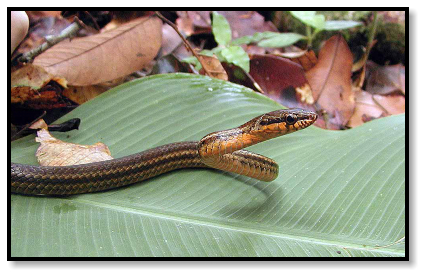
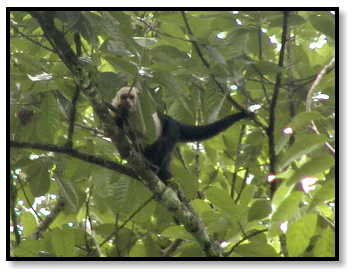
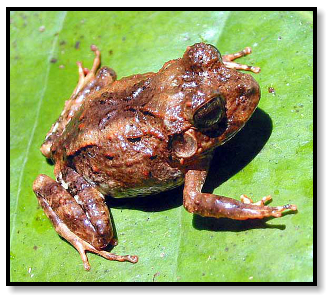
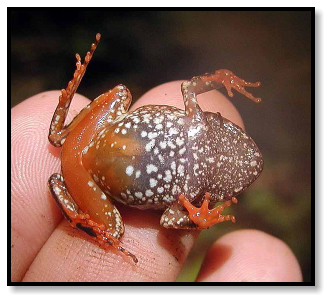
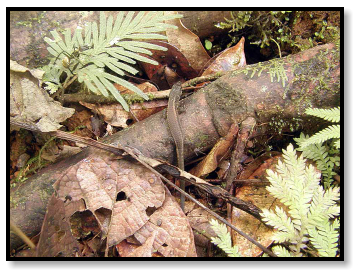

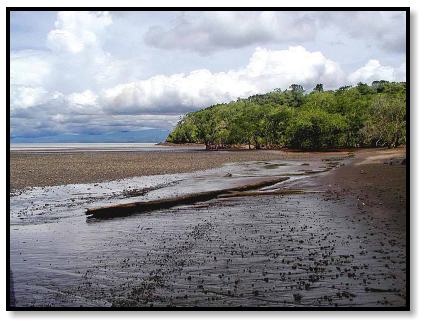
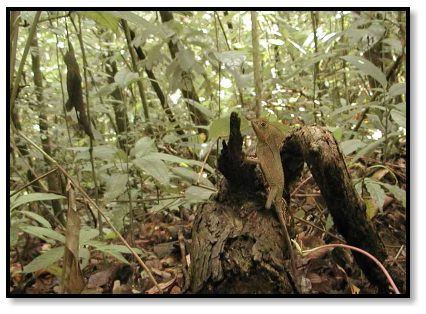
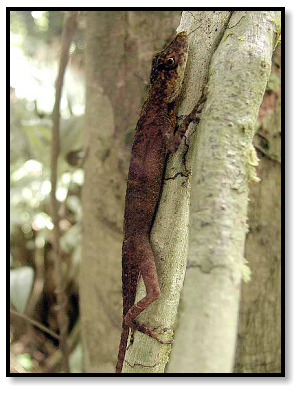
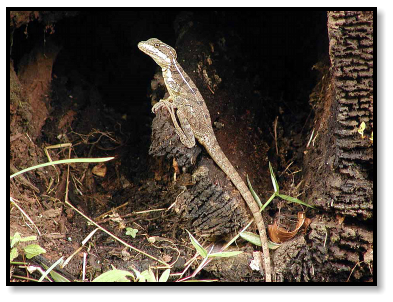
Salmon-bellied Racer
Mastigodryas melanolomus
Broad-headed Frog
Eleutherodactylus rugosus
Northern Spectacled Lizard
Leposoma southi
Slender Anole (?)
Norops cupreus
Brown Basilisk (female)
Basiliscus basiliscus

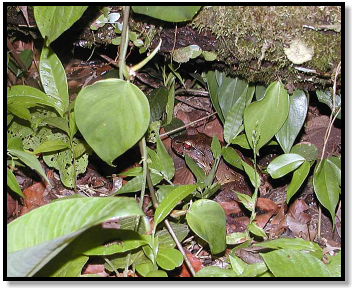
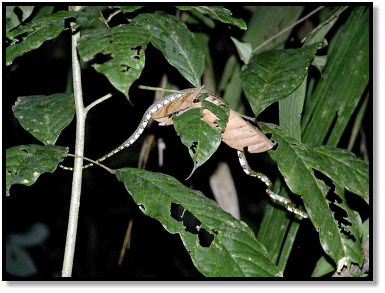

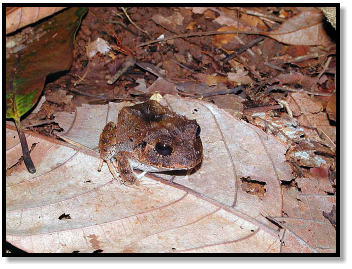
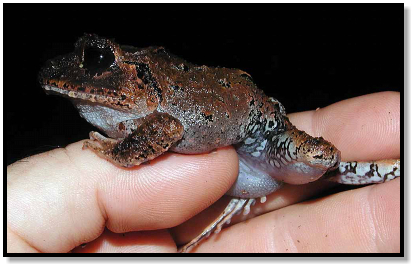
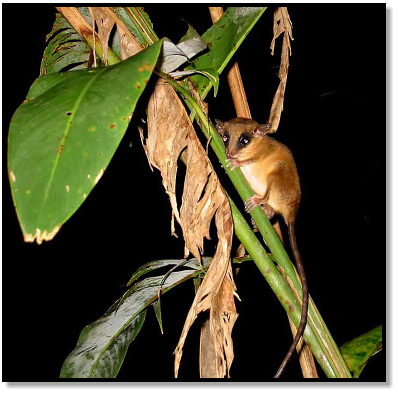
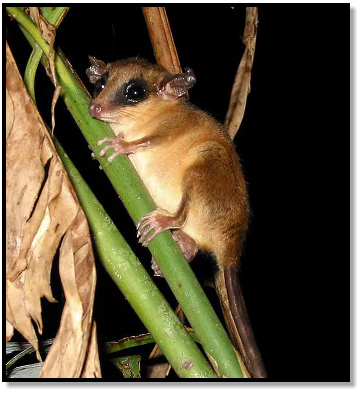

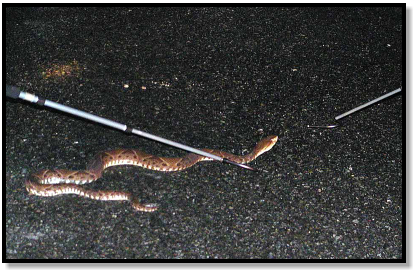
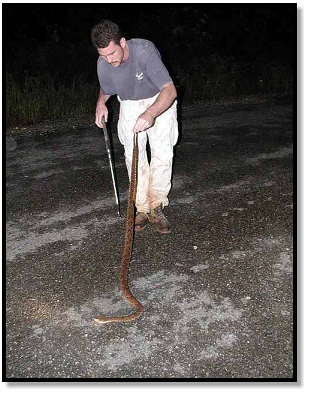
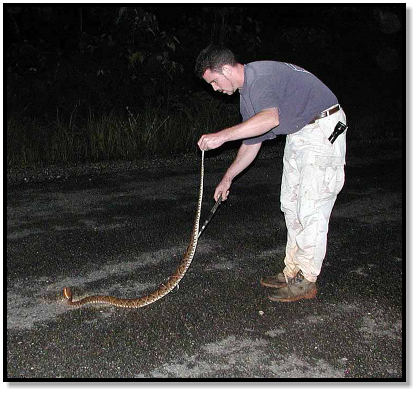
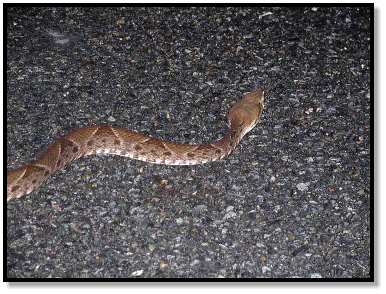
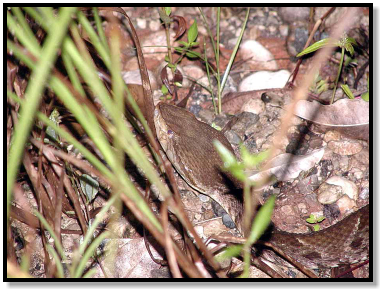
Slender Snail Sucker
Sibon dimidiata
Smokey Jungle Frog
Leptodactylus pentadactylus
Fer-de-Lance
Bothrops asper







